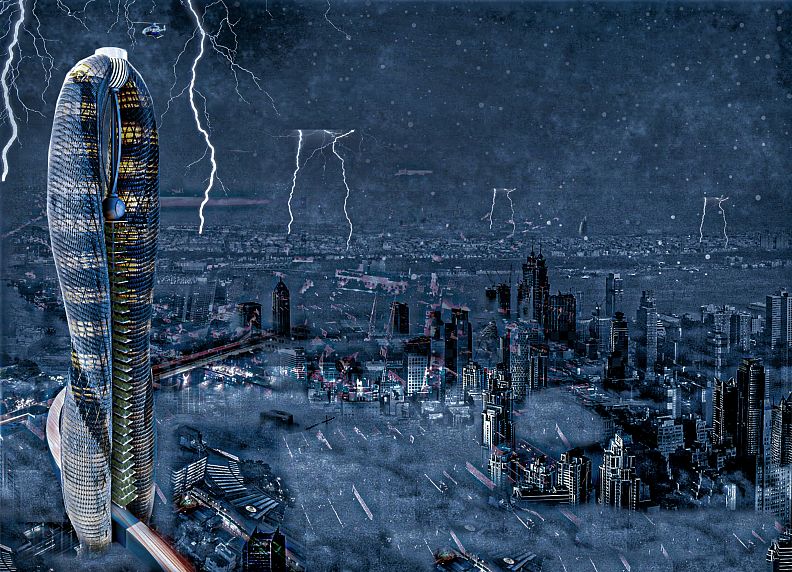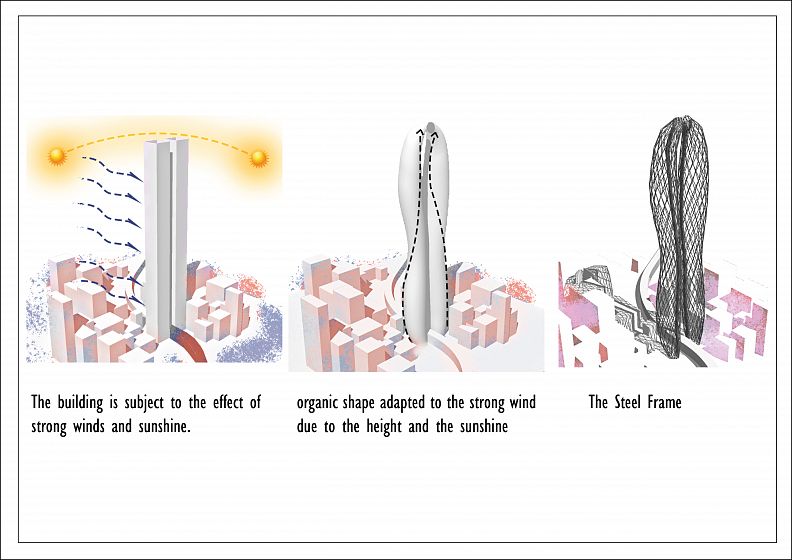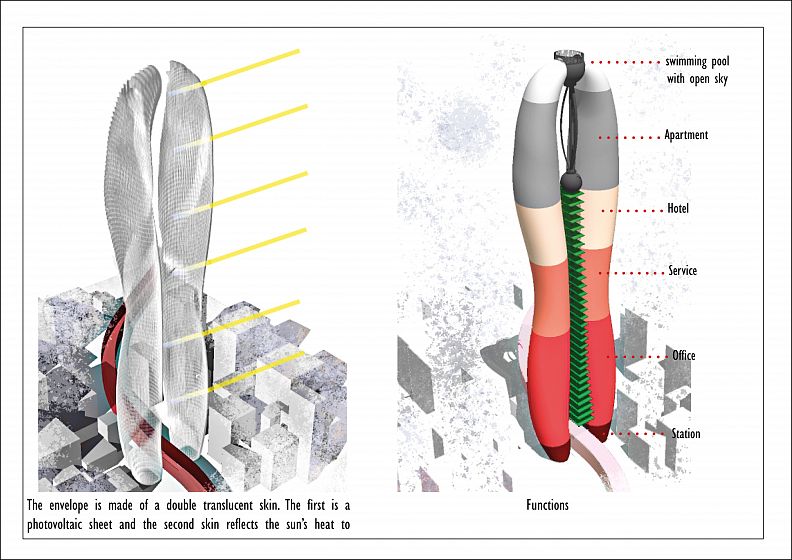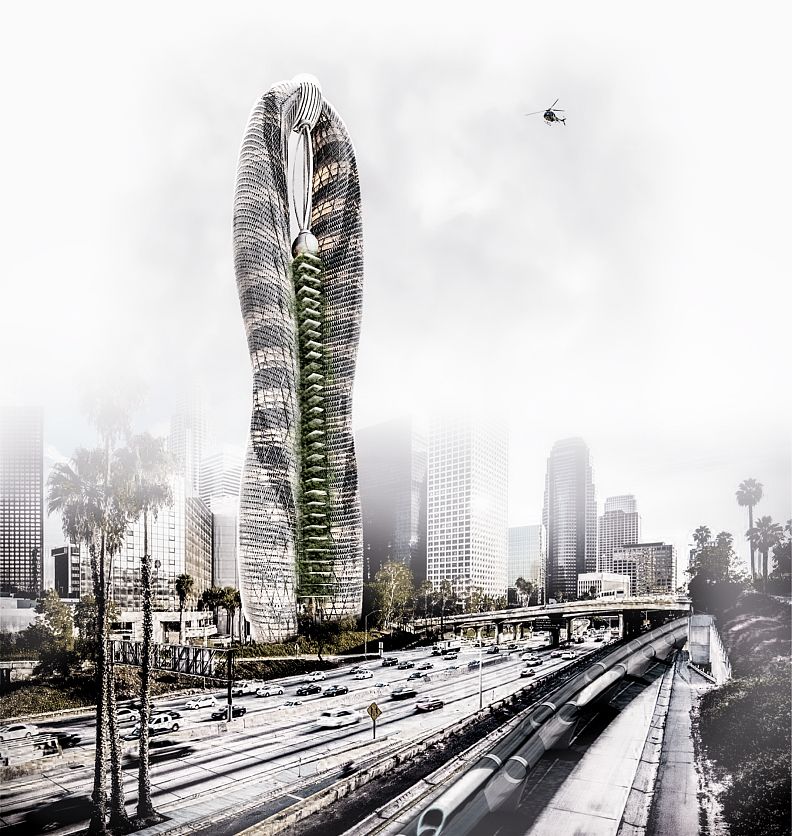BIS TOWER ( Bionics, Integration, sustainable building)

Project idea
The 21st century is marked by strong urbanization. Since 2008, more than half of the world's population has been living in urban areas. This urbanisation is generally accompanied by high-density development, which is associated with drawbacks such as air pollution and, above all, the lack of adequate space to accommodate this growing population.
As society develops, so does the increasing density of transport systems. In highly urbanized countries, the urban landscape is shaped by very wide transport routes that take up space by abandoning wasteland that can be reclaimed. With the growing population and the increasing lack of space, what will the future offer us to the road wastelands to cope with the demographic explosion?
Thus the BIS TOWER seeks to reclaim wasteland in the wake of roads, generally abandoned and unattractive spaces.
Project description
The Tower is a mixed-use building with a unique shape. It consists of two organic-looking towers linked by hanging gardens, a wind turbine and a helicopter landing strip at the top. At a height of 600 metres, the connecting tower takes on a curvilinear appearance, its relationship with the metro and serves as a bridge between the two separate spaces. The tower houses several functions such as: offices, hotel, apartment, stations, services, open-air swimming pool.
Technical information
The demountable structure of the tower is made of steel covered with a double translucent envelope, which gives a 360-degree view of the different floors of the building. The first skin is a sheet made of photovoltaics and the second skin, naturally ventilated, reflects the heat of the sun to avoid overheating.
Located in an easily accessible area, the building materials will be transported quickly and without considerable losses. The prefabricated structure of the building will be assembled on site, and in the lower part of the skyscraper, there is a layer of aluminium to reduce noise pollution. To ensure the energy efficiency of the building, wind turbines and photovoltaic panels are used to take advantage of the wind and the sun respectively. Resources are saved by recycling rainwater and geothermal energy.









